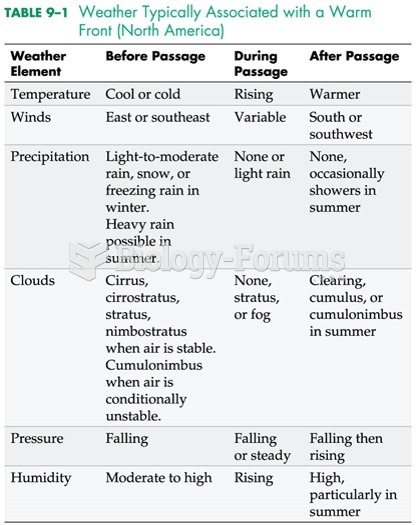Answer to Question 1
Exercise sessions always should be preceded by a 5- to 10-minute warm-up and be followed by a 10-minute cool-down period.
The purpose of the warm-up is to aid in the transition from rest to exercise. A good warm-up increases extensibility of the muscles and connective tissue, extends joint range of motion, and enhances muscular activity. A warm-up consists of general calisthenics, mild stretching exercises, and walking, jogging, or cycling for a few minutes at a lower intensity than the actual target zone. The concluding phase of the warm-up is a gradual increase in exercise intensity to the lower end of the target training zone.
In the cool-down, the intensity of exercise is decreased gradually to help the body return to near-resting levels, followed by stretching and relaxation activities. Stopping abruptly causes blood to pool in the exercised body parts, diminishing the return of blood to the heart. Less blood return can cause a sudden drop in blood pressure, dizziness and faintness, or cardiac abnormalities. The cool-down phase also helps dissipate body heat and remove the lactic acid produced during high-intensity exercise.
The American College of Sports Medicine recommends at least 10 minutes of stretching exercises performed immediately following the warm-up phase (prior to exercising in the appropriate target zone) or after the cool-down phase. The purpose of stretching following either the warm-up or the cool-down phase is because warm muscles achieve a greater range of motion, thus helping enhance the flexibility program. While two to three stretching sessions per week are recommended, near daily stretching is most effective.
Answer to Question 2
Vigorous-intensity programs yield higher improvements in VO2max than do moderate-intensity programs, especially in people with higher fitness levels. Furthermore, a comprehensive review of research articles looking at the protective benefits of physical fitness versus the weekly amount of physical activity found that higher levels of aerobic fitness are associated with a lower incidence of cardiovascular disease, even when the duration of moderate-intensity activity is prolonged to match the energy expenditure performed during a shorter vigorous effort. The results showed that people who accumulate the greatest amount of weekly physical activity have a 28 percent reduction in the risk of cardiovascular disease; whereas the individuals with the highest level of aerobic fitness reduce their risk by 64 percent, more than twice the level of risk reduction in the most active group.
Another review of several clinical studies substantiated that vigorous, compared with moderate-intensity, exercise leads to better improvements in coronary heart disease risk factors, including aerobic endurance, blood pressure, and blood glucose control. As a result, the pendulum is again swinging toward vigorous intensity because of the added aerobic benefits, greater protection against disease, and larger energy expenditure that helps with weight management.







